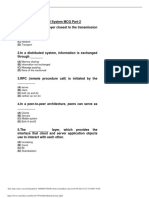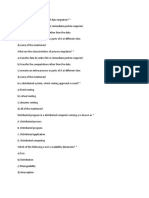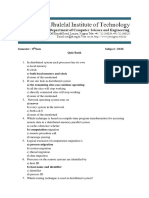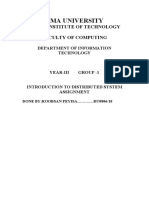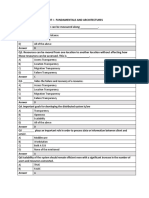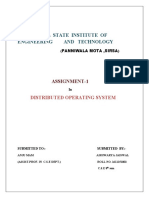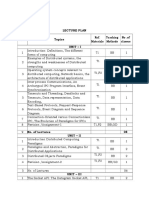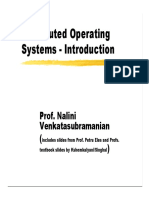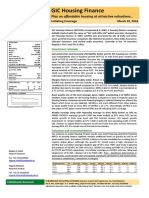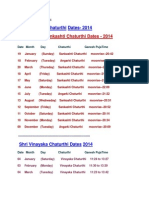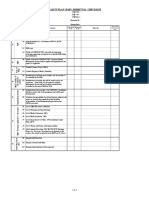0% found this document useful (0 votes)
78 views10 pagesDcs Unit 2 Distributed Computing Systems
The document discusses remote procedure calls (RPC) and distributed computing systems. It contains questions and answers related to key concepts. Specifically:
- RPC allows a program to cause a subroutine to execute remotely. It works between processes on the same or different computers connected via a network.
- RPC uses client and server stubs to pack parameters and transmit calls over the network. It defines machine-independent data representations.
- Distributed coordination involves concepts like logical clocks, synchronization, and election algorithms to prevent deadlocks and coordinate transactions across multiple systems.
Uploaded by
Amit PatilCopyright
© © All Rights Reserved
We take content rights seriously. If you suspect this is your content, claim it here.
Available Formats
Download as PDF, TXT or read online on Scribd
0% found this document useful (0 votes)
78 views10 pagesDcs Unit 2 Distributed Computing Systems
The document discusses remote procedure calls (RPC) and distributed computing systems. It contains questions and answers related to key concepts. Specifically:
- RPC allows a program to cause a subroutine to execute remotely. It works between processes on the same or different computers connected via a network.
- RPC uses client and server stubs to pack parameters and transmit calls over the network. It defines machine-independent data representations.
- Distributed coordination involves concepts like logical clocks, synchronization, and election algorithms to prevent deadlocks and coordinate transactions across multiple systems.
Uploaded by
Amit PatilCopyright
© © All Rights Reserved
We take content rights seriously. If you suspect this is your content, claim it here.
Available Formats
Download as PDF, TXT or read online on Scribd
/ 10
